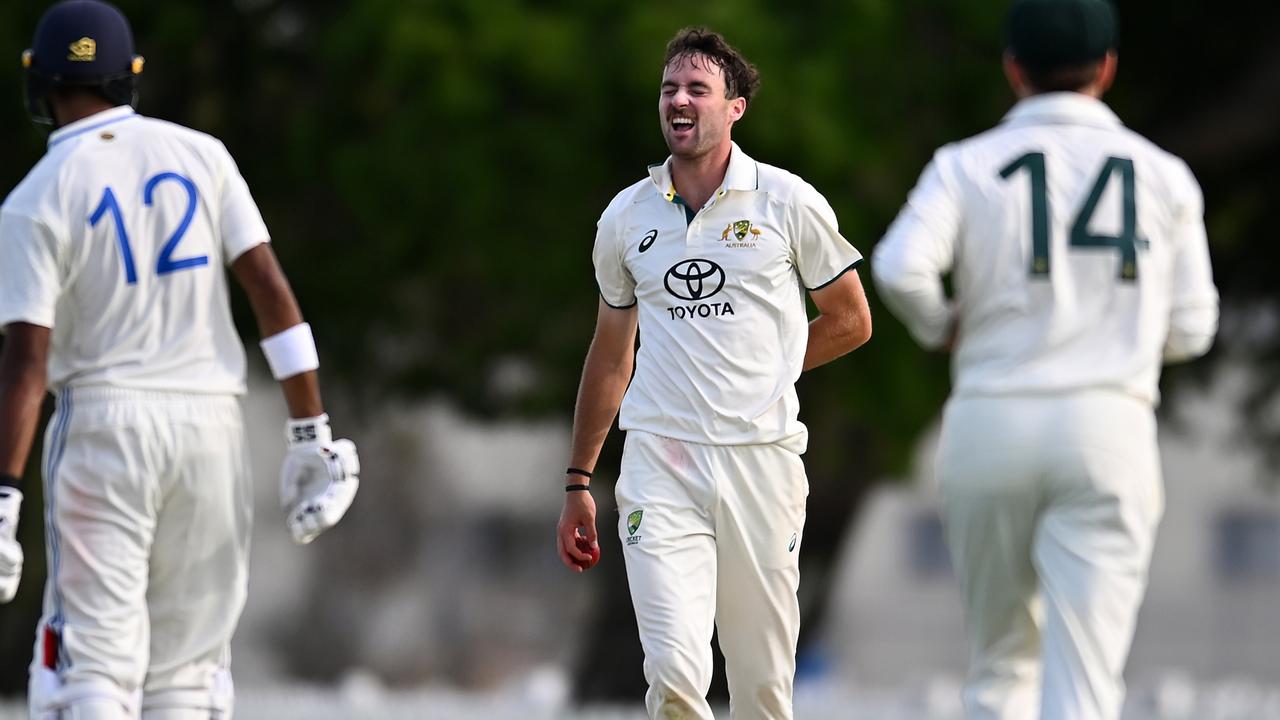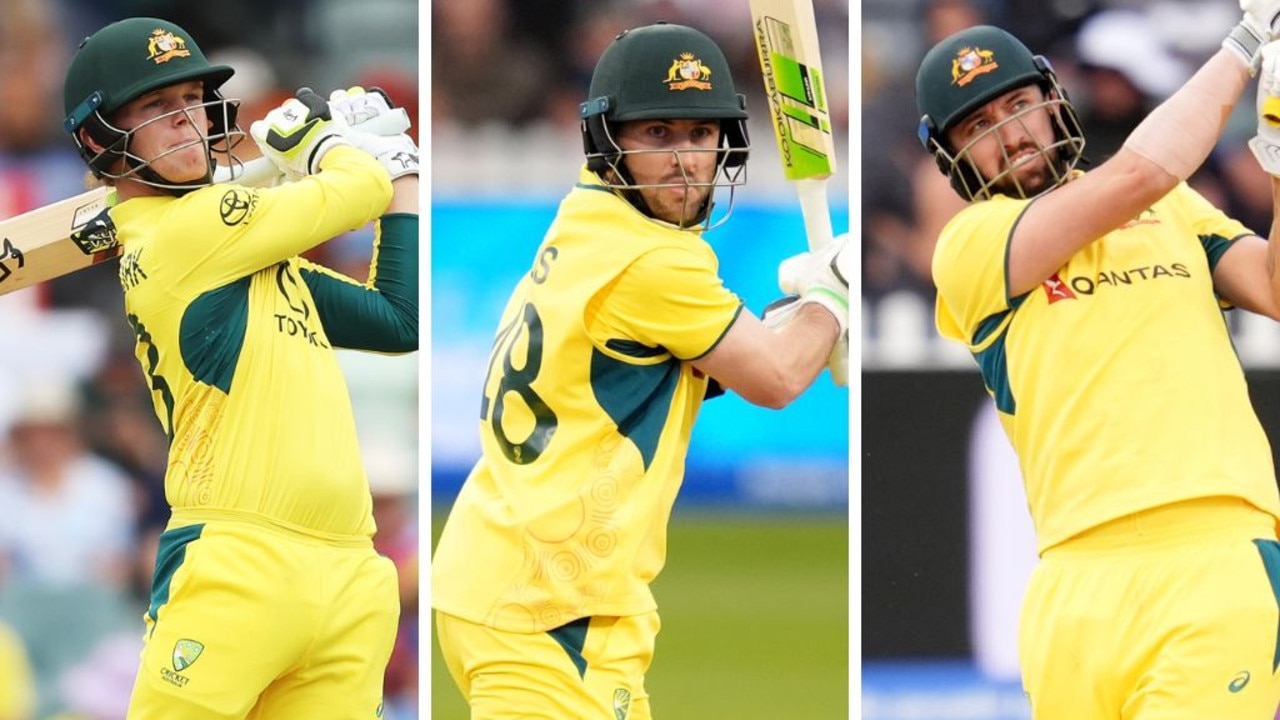‘Best six batters’ policy puts bolter in box seat: Aussies rebuild well at rock bottom but not when on top

- by Admin
- November 1, 2024

At the start of the year all we heard from the selectors was that they wanted to pick the best six batters in the country irrespective of positions.
At the time it sounded like a convenient way of explaining how they could get Cameron Green back into the Test team after opener David Warner retired.
It sounded that way because that’s exactly what it was.
Now if that mantra still holds true, Nathan McSweeney will be making his Test debut when Australia take on India in Perth on November 22.
The 25-year-old South Australian captain is not necessarily head and shoulders the sixth-best batter in the land following Green’s summer being wiped out by back surgery.
But he is the only Test candidate in some semblance of form – 297 runs at 97 in the Shield with au unbeaten ton against a Blues attack boasting Nathan Lyon on a fourth-day wicket.
Cameron Bancroft is enduring the worst possible time for his run spree to turn into a drought, Sam Konstas has shown he’s a bright prospect but not quite ready for the international arena and Marcus Harris has again proved that he is Bradman-esque at the Junction Oval featherbed against Shield attacks and little more than a tenacious grafter on most other pitches against quality bowling.
Matt Renshaw’s form has plummeted so dramatically that he has gone from being the reserve batter in Australia’s Test squad last summer to being in danger of losing his spot in the Queensland line-up for the second time in his career.
McSweeney top-scored with what by usual standards was a modest 39 for Australia A against their Indian counterparts in Mackay on Friday but in the context of the match, it was worth at least double considering the visitors were rolled for 107 on day one and his top-order teammates/Test selection rivals all fell cheaply.
He put a high price on his wicket, surviving for 131 deliveries to help guide his side to a first-innings lead of 88.
It has the potential to be the most substantial meh score since Khawaja’s 43 on debut on a rainy day at Sydney in 2011 gave Australia hope after a gloomy Ashes series.
With the Indians finishing at 2-208 by stumps on day two, there will likely be a decent enough total for the Aussie A top order to show the selectors an innings of some substance.
There is another four-dayer at the MCG next week for the four batters fighting over the one vacant Test spot to mount a late case for selection. Bancroft, Harris or Konstas would need to ton up in Melbourne and even that might not be enough to get the jump on McSweeney, who has been the form batter in the early Sheffield Shield rounds. As in the one in best form, not the only one in good form, but Alex Carey and Josh Inglis are probably the only other two at domestic level who would be happy with their early returns.
Nathan McSweeney bats in Mackay. (Photo by Albert Perez/Getty Images)
McSweeney bats at first drop at state level but there is not a helluva lot of difference between coming at No.3 or opening, particularly when you play for South Australia.
There are basically three batting positions in a red-ball XI – openers who are specialists at facing the new ball, the first drop who is adept at coming in anywhere from the second delivery to a long way into the innings and the rest, usually listed from the next-best batter at four on a sliding scale all the way down to 11.
And where someone bats at Shield level does not always translate to where they find success in the Test arena – Justin Langer and Simon Katich are examples of middle-order bats who ended up thriving as openers while Mike Hussey went the other way.
Australia have historically been great at rebuilding their Test line-up in times of turmoil but they tend to struggle to get the regeneration process right during boom periods when they rule the cricketing world.
At the moment, Pat Cummins’ side is the World Test champions and apart from their recent failures against India, they deserve the heavyweight belt.
Warner’s retirement will be the first departure of many over the next two or three years by established stars and the onus is on the selectors to bring in fresh blood at regular intervals to avoid a team of lambs to the slaughter, which inadvertently happened in the late 1970s when the Packer revolution ripped through the Test side.
In the 1980s, it was the simultaneous retirement of Greg Chappell, Dennis Lillee and Rod Marsh, along with the subsequent demise of Kim Hughes as captain, which left Allan Border with a rabble.
Ricky Ponting was at the helm for the transition after Shane Warne, Glenn McGrath and Justin Langer were the first of a string of champions quickly fading away in 2007 and in more recent times there was the 2016 panic after the infamous Bellerive belting at the hands of South Africa.
Australian cricket is a resilient animal – the rebuilds in each of those occasions was painful and initially slower than the public anticipated at times but the team came out the other side in a strong position and was soon back on top of the global landscape.
Perhaps that is why the selectors are so reluctant to tap their current stars on the shoulder and prefer to ride out their form slumps rather than take the first opportunity to blood new talent.
Their hand has pretty much been forced this time around – McSweeney has hit form while his rivals have hit the wall.
Timing is everything when you are a batter, whether it’s at the crease or getting a call-up to the Test team, and right now he is the only player who looks capable of handling the step up of facing India over a five-match series.
The Latest News
-
November 2, 2024How Ben Simmons’ $177million NBA fortune could supercharge Australian league as Aussie start commits to LA Olympics in Boomers swansong
-
November 2, 2024Out cheaply: Potential Test opener squanders chance to impress
-
November 2, 2024Melbourne Cup 2024: Racing Victoria vets scratched another International horse
-
November 2, 2024Cricket world turns on Virat Kohli over embarrassing act before Aussie Test series
-
November 2, 2024Awards for travel’s best


